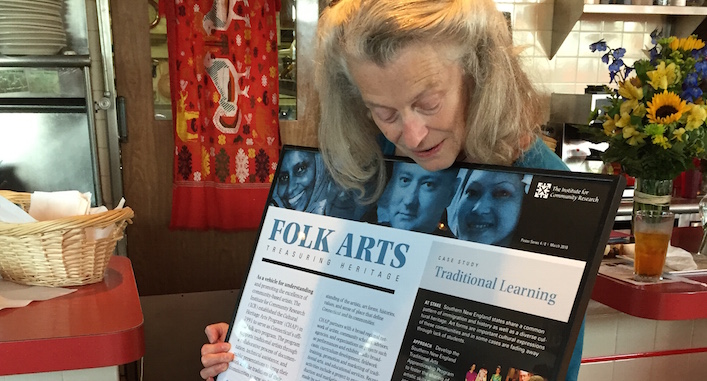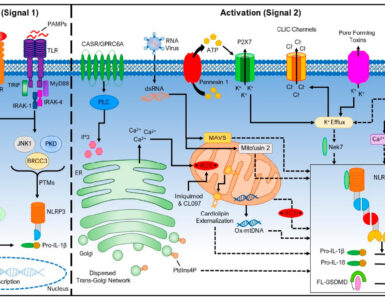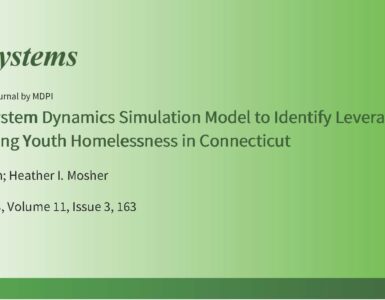FOR IMMEDIATE RELEASE
Contact:
Margaret Weeks, Executive Director, Institute for Community Research, 860-278-2044 ext. 229, mweeks@icrweb.org
Jody Blankenship, Executive Director, Connecticut Historical Society, 860-236-5621, jody_blankenship@chs.org
Lynne Williamson, Director, Connecticut Cultural Heritage Arts Program, 860-278-2044 x 251, Lynne.Williamson@icrweb.org
The Connecticut Cultural Heritage Arts Program
joins the Connecticut Historical Society
The Institute for Community Research established the Cultural Heritage Arts Program in 1991 to document the state’s rich and diverse cultural traditions and to share the excellent artistic work and community experiences of folk artists living here. The program’s activities contribute to greater public understanding of Connecticut’s history, cultural character, and changing demographics. CHAP partners with artists and their communities to record their traditional art forms and cultural practices, provides technical assistance that strengthens their resources, and develops public presentations that bring traditional artists and the stories of their communities to new audiences. Part of a nationwide network of public folklore programs, CHAP serves as Connecticut’s official folk arts program with support from the National Endowment for the Arts, the Connecticut Office of the Arts/Department of Economic and Community Development, the Greater Hartford Arts Council, the Connecticut Humanities Council, the City of Hartford and several local foundations.
CHAP’s work is unique in Connecticut, having documented and presented more than 350 traditional artists whose work would otherwise remain unknown or under-represented. The program partners with a regional network of artists, community scholars, advisors, agencies, and organizations to design performances and exhibits, radio broadcasts and podcasts, educational activities, training in fieldwork methods, promotion and marketing of traditional arts, public workshops and discussions and arts services. CHAP’s photographic and video recordings of the state’s folk artists and their communities form a significant multi-media archive.
One example of CHAP’s program is Mas: Caribbean Carnival Costumes from Hartford, a summer training course for Hartford teens who learn to make costumes and perform dances from West Indian Carnival (Mas) traditions. Now in its fifth year, this project has helped to add beautiful costumes and a youthful sense of excitement into Hartford’s annual West Indian Parade. Along with artist-curators, CHAP has also created or hosted more than thirty exhibits.
“Conserving culture and providing opportunities for artistic expression are important components of ICR’s efforts to engage diverse communities in producing knowledge and sharing experiences that enrich their lives and contribute to community well-being,” said ICR Executive Director, Margaret Weeks. “We will continue to build on these efforts with our new partners at the CHS as CHAP transitions to its new home there.”
The Connecticut Historical Society has developed a new strategic plan to guide the organization’s future, and sees CHAP as a vital contributor to development of new outreach and audience services. CHS Executive Director Jody Blankenship said, “Our state’s story, history and character has been forged by the waves of immigrants who have contributed new ideas, energy and passion, making Connecticut a thriving and exciting place to live. The CHAP will allow the CHS to further its efforts of documenting and sharing the various contributions that shaped who we are and what we aspire to become.”
“Connecticut’s artists, cultures, and communities truly enrich us all as participants in the state’s long history and current cultural health,” said CHAP Director Lynne Williamson. “From the first peoples in this land to the most recent refugee newcomers, CHAP is dedicated to helping tell their stories as a way to deepen understanding and enjoyment of the vibrant traditions of our neighbors.”
About the Institute for Community Research
The Institute for Community Research is an independent, nonprofit organization that conducts applied research and community enhancement programs to promote equal access to health, education, and cultural resources. ICR’s Connecticut Cultural Heritage Arts Program encourages and promotes traditional artists and their communities through an active process of documentation, technical assistance, and public presentations to bring their work and the history of their communities to new audiences. Support comes from the National Endowment for the Arts, the Connecticut Commission on Culture and Tourism, and the Greater Hartford Arts Council as well as foundations.
For more information visit incommunityresearch.org and ctheritagearts.org.
About the Connecticut Historical Society
A private, nonprofit, educational organization established in 1825, the Connecticut Historical Society is the state’s official historical society and one of the oldest in the nation. Located at 1 Elizabeth Street in Hartford, the CHS houses a museum, library, and the Edgar F. Waterman Research Center that are open to the public and funded by private contributions. The CHS’s collection includes more than 4 million manuscripts, graphics, books, artifacts, and other historical materials accessible at our campus and on loan at other organizations.
The CHS collection, programs and exhibits help Connecticut residents connect with each other, have conversations that shape our communities, and make informed decisions based on our past and present.
For more information, visit chs.org.
[/fusion_builder_column][/fusion_builder_row][/fusion_builder_container]






Add comment